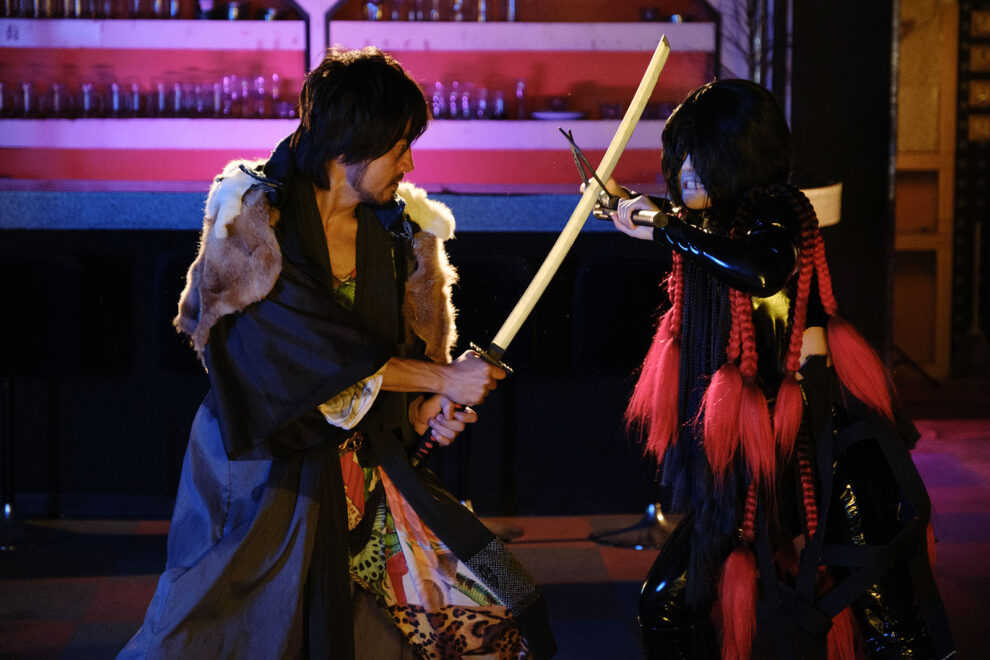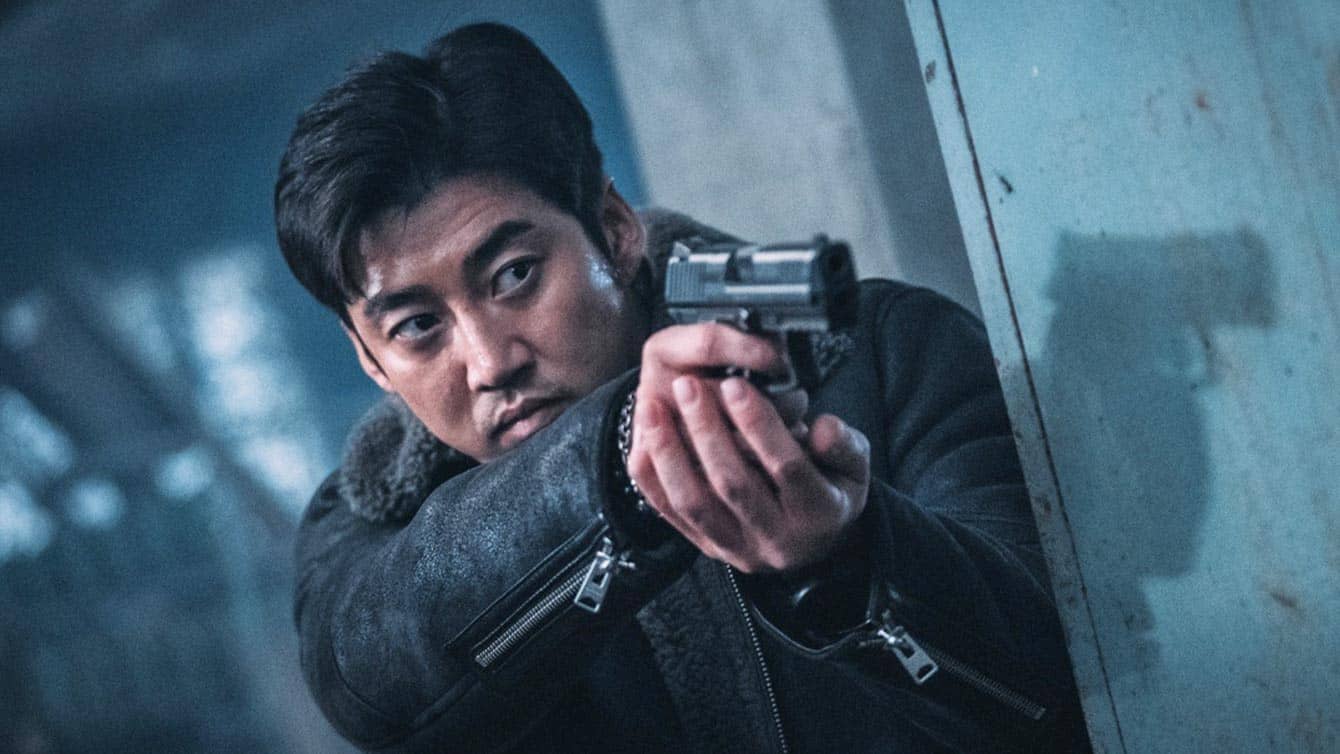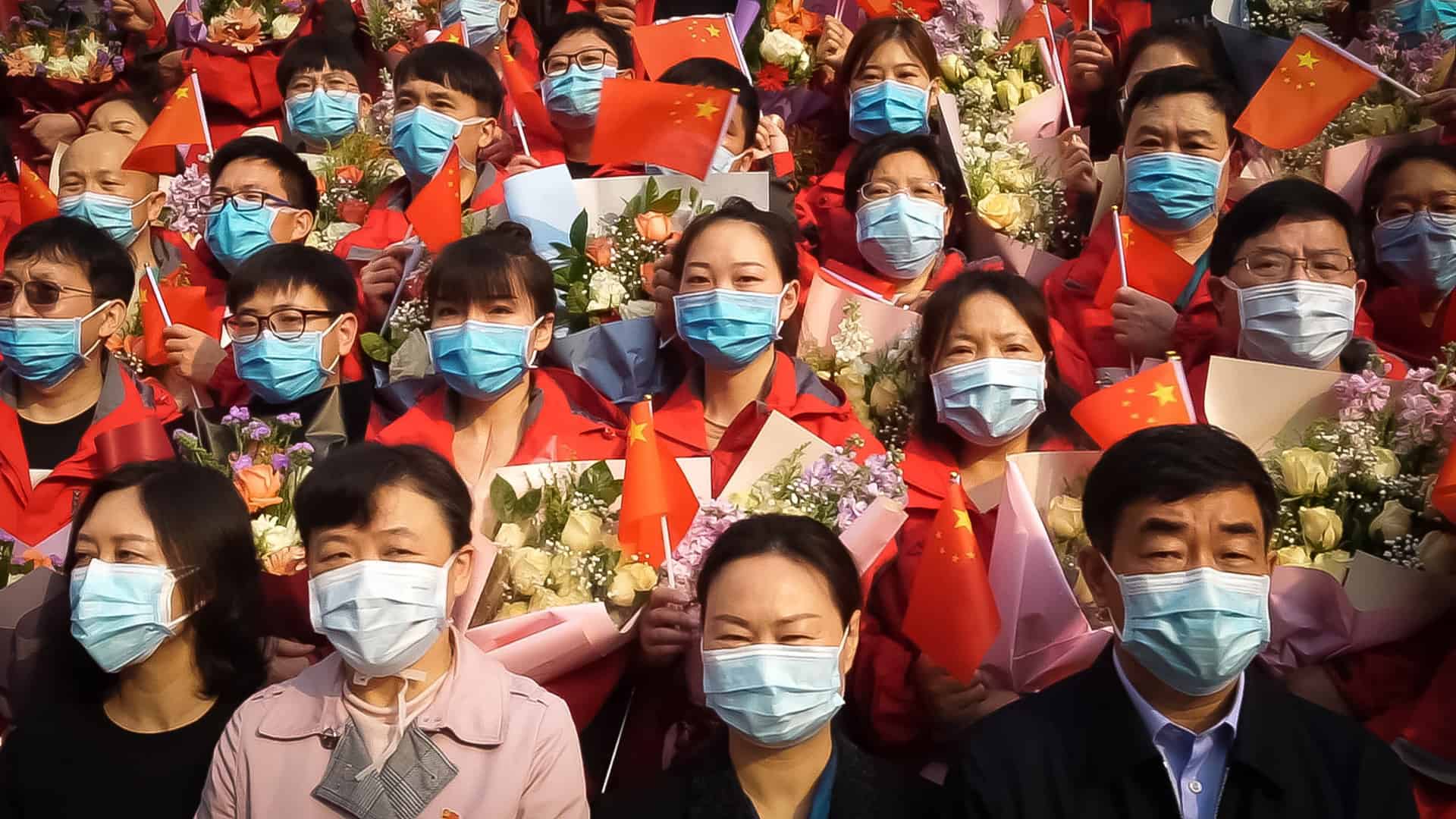By Eleo Billet
The latest film from prolific Japanese director Yoshihiro Nishimura, this self-produced work is meant to be a spin-off of his action flick, “The Ninja War of Torakage”. First shown at “2300 Plan 9” in Switzerland, then in Brazil, the movie has yet to be released in Japan.
The ninja samurai Onimanji, locked in a cursed urn for 631 years and 59 days, is resurrected back into the present day by the Kika Company. This hitman organization consists of Kika, a seemingly impassive leader, Shigeru, a goofy assassin, and their mysterious informant. Disoriented, Onimanji must adapt to modern Japan and support his new teammates. But his ultimate test is to face the rival company Nutmeg and their boss, Natsumegu, with whom his employers have a rocky history. The hero will dismantle a drug ring and find his legendary sword while fighting enemies from another temporality.
Check this interview with the director
As one quickly understands, the interest of the film is less in the scenario and the themes than in the visual experimentations. Thus, it is not required to have seen “The Ninja War of Torakage” to understand and appreciate “Onimanji” since it provides all the necessary explanations, even though the story is chaotic. The circumstances that led Onimanji to his imprisonment are summarized and all the characters are given a back-story in flashback. Nevertheless, they are not fully fleshed out and rely on superficial characteristics. The relationship between Onimanji and Shigeru is, for instance, particularly annoying since the humor drags on between the samurai, who threatens to kill the clumsy man, and the latter, who makes jokes. The running time of almost two hours is also at fault, and many scenes would have benefited from being shortened. But sometimes the wit hits the spot, like this running-gag around the crab burgers, or even the appearance of the title during a fun decapitation.
Fans of splatter and other gory antics may be disappointed that blood spurts are rare and often digital. But the director's other gimmicks, such as the sexy shots of the heroines, sudden displays of extreme violence, and uneven humor, are all present. Freedom of self-production allows Yoshihiro Nishimura and his team to include several split screens, aspect ratio changes, and blinding neon flashes. In some of the fight sequences, everything is undertaken to distort the image and do a lot to amaze with little means. Thus, indoor fights are better worked and mastered than outdoor ones. As an example, one can think of this poorly constructed and downright messy motorcycle parade scene. Indeed, one will note the lack of budget in the frequent changes of luminosity, the questionable choice of music, and the lack of extravagance of the costumes and sets, a trademark of the director.
The first face-off between the two companies, in the form of an ultra-choreographed musical, is very impressive and catchy. If it is not yet the climax, it remains the culmination of the film, where the actors deploy at best their competence in action scenes and where they are the most credible. It is worth noting that all the leading cast members have already collaborated with the director, whether the veteran actor Yuya Ishikawa or the newcomer Natsumi Tadano, already seen in “Holy Mother”. As for Masanori Mimoto, who reprises his role of Onimanji, he is dedicated as the impassive warrior enforcer who realizes that he must once again protect his loved ones.
Despite its many obvious technical shortcomings, “Onimanji” is a valuable experience. It marks a nice throwback to the cheap Japanese productions dear to the fans' hearts. Let's hope that the director can fund other projects because the father of “Tokyo Gore Police” still has a lot to offer.
















